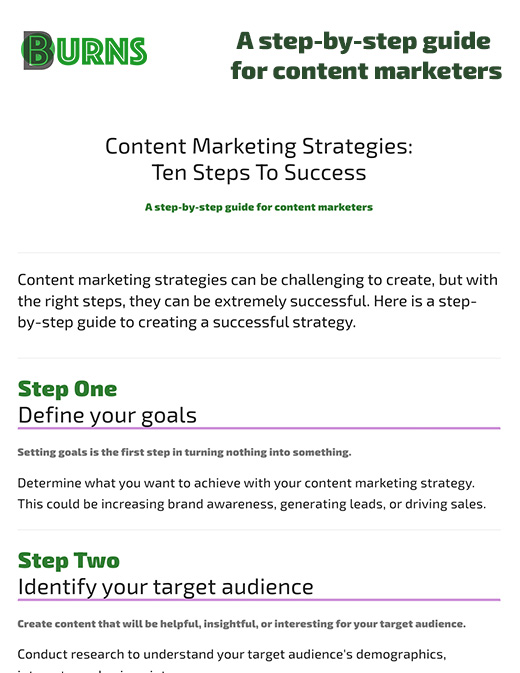Eight Steps For Creating An Email Marketing Strategy
A step-by-step guide for email marketers
Email marketing allows you to reach and connect with your target audience in a personalized way, increase engagement, and build relationships. It's a cost-effective way to reach customers, especially when compared to other marketing channels.
Step One
Define your audience
An effective email is a relevant email.
Determine who your target audience is and what they want. This will help you tailor your email campaign to their needs.
Step Two
Establish your goals
Without goals, and plans to reach them, you're done before you start.
Determine what you want to achieve with your email campaign. Set specific, measurable goals that align with your overall marketing strategy.
Step Three
Build your email list
Good email segments are those that are based on specific criteria.
Create a list of subscribers who have opted in to receive your emails. Use lead magnets and other tactics to encourage sign-ups.
Step Four
Choose an email marketing platform
Create the best email marketing campaigns.
Select an email marketing platform that meets your needs and budget. Popular options include Marketo, and Hubspot for enterprise. Mailchimp, Campaign Monitor, and SendGrid are also popular options.
Step Five
Create your email content
An hour of planning can save you 10 hours of doing.
Develop compelling email content that resonates with your target audience. Use a mix of text, images, and calls to action to engage your subscribers.
Step Six
Design your emails
Treat your subscribers like humans that you want to connect with.
Design visually appealing emails that are optimized for different devices and email clients.
Step Seven
Test and optimize
Trying leads to failure, and failing leads to learning.
Test your emails to ensure they are delivered successfully and look good on different devices. Use A/B testing to optimize your subject lines, content, and calls to action.
Step Eight
Measure your results
What gets measured gets optimized.
Use analytics tools to track the performance of your email campaign. Monitor metrics such as open rates, click-through rates, and conversions, and adjust your strategy as needed to improve your results.
A fresh, modern strategic approach
Following these steps, you can create an effective email marketing strategy that engages your target audience and drives results for your business. A well-executed email marketing strategy can help generate more leads, increase sales, and build a loyal customer base.
read_more Bonus Guide
Here are some best practices for implementing email segmentation:
1. Set your segmentation goals: Determine what you want to achieve with your email segmentation strategy and how it aligns with your overall marketing goals.
2. Define your segments: Identify the specific criteria you will use to segment your email list, such as demographics, interests, behavior, and more.
3. Use automation: Use email marketing software that offers automation features to streamline the segmentation process and ensure that your subscribers receive the right content at the right time.
4. Avoid over-segmenting: While it's important to segment your email list, avoid creating too many segments that may lead to a fragmented email list that's difficult to manage.
5. Test and optimize: Use A/B testing to optimize your email content and segmentation strategy. Monitor your results and adjust your strategy as needed to improve your performance.
Follow these best practices and you can create an effective email segmentation strategy that helps you connect with your subscribers and drive better results for your business.
